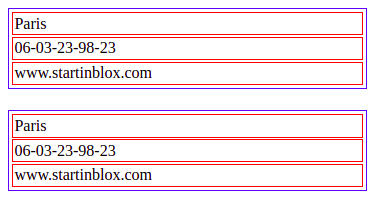solid-calendar
Receives the URL of a resource or of a container of resources via its
data-src attribute, and displays it in a calendar. Here is the
list of fields needed to display the resources properly:
name: name of the event displayed on the calendardate: date on which the resource will be displayed
Like for solid-display, filters and searching capabilities can be easily added to interact with the list of data being displayed.
Mixins
This component uses the following mixins:
Please check their documentation to know more about their capabilities.
Mixin attributes
From list-mixin :
empty-value
Value to pass to the empty widget if the list is empty. It is accessible in
${value}For example, it can be a route name, which allow to put a link in the widget.
<solid-display data-src="http://server/projects/" fields="name" empty-widget="no-project-widget" empty-value="add-project" ></solid-display> <solid-widget name="no-project-widget"> <template> <small>No project yet in the list. <solid-link next="${value}">click here to add one</solid-link></small> </template> </solid-widget>
From next-mixin :
It can also be used to indicate the
nameattribute of the<solid-route>to reach after :
a click on a
<solid-delete>button (only after the resource is correctly deleted);a click on the submit button in a
<solid-form>(only after the resource is correctly saved).See the documentation of
<solid-router>for more details.
From store-mixin :
data-src
The uri of the LDP resource you want to fetch and use in the component.
Each time this attribute is changed, the data is fetched again.
When the data has been successfuly fetched, the mixin ask the component to render.
nested-field
The name of the field of the requested resource to display. Useful when the source url is auto-generated (for instance, with the attribute
bind-resources) but you need to display another field of this source.The example below illustrates how to use nested-field attribute :
The
profileis a resource nested in the current resource, it will automatically fetch thecity,phone,websitevalues to display them.The second solid-display shows another way to display the values from a nested resource with dot
..<solid-display data-src="data/list/user-1.jsonld" nested-field="profile" fields="city, phone, website" ></solid-display> <solid-display data-src="data/list/user-1.jsonld" fields="profile.city, profile.phone, profile.website" ></solid-display>

extra-context
The id of the
<script>tag which contains the context you want to add for this component. An extra context looks like this:<script id="custom-context" type="application/ld+json"> { "user": "https://api.test-paris.happy-dev.fr/users/" } </script>If your
<script>tag has the attributedata-default-context, this extra context will be applied on all the components which doesn’t have anextra-contextattribute.
loader-id
Id of the loader element you want to display during the loading time.
Exemple of use :
<section> <h1>Solid-form</h1> <div id="form-loader" > Loading… </div> <solid-form data-src="https://api.startinblox.com/users/" fields= "first_name, last_name, email" label-first_name = "First name" label-last_name = "Last name" label-email = "Email" loader-id = "form-loader"> </solid-form> </section>
no-render
Available from version 0.13
While this attribute is present on a component, no data will be fetched. This attribute is automatically removed by the router when the component is in a view which has been activated. This allow to lazy-load components.
store:// attribute values
Available from version 0.13
This mixin decode all attribute values starting by
store://resource,store://containerorstore://userand replace them by the values fetched from the store.It can be a value fetched from the current resource or the current logged in user (works with
sib-auth).This example will create a text input filled with the username of the current user:
<solid-form data-src="https://api.startinblox.com/circles/" fields="user" value-user="store://user.username" ></solid-form>This example will write the name of the circle in the custom field:
<solid-display data-src="https://api.startinblox.com/circles/1/" fields="custom-field" value-custom-field="store://resource.name" ></solid-display>
Events
resourceSelect
Triggered when an event is clicked on the calendar